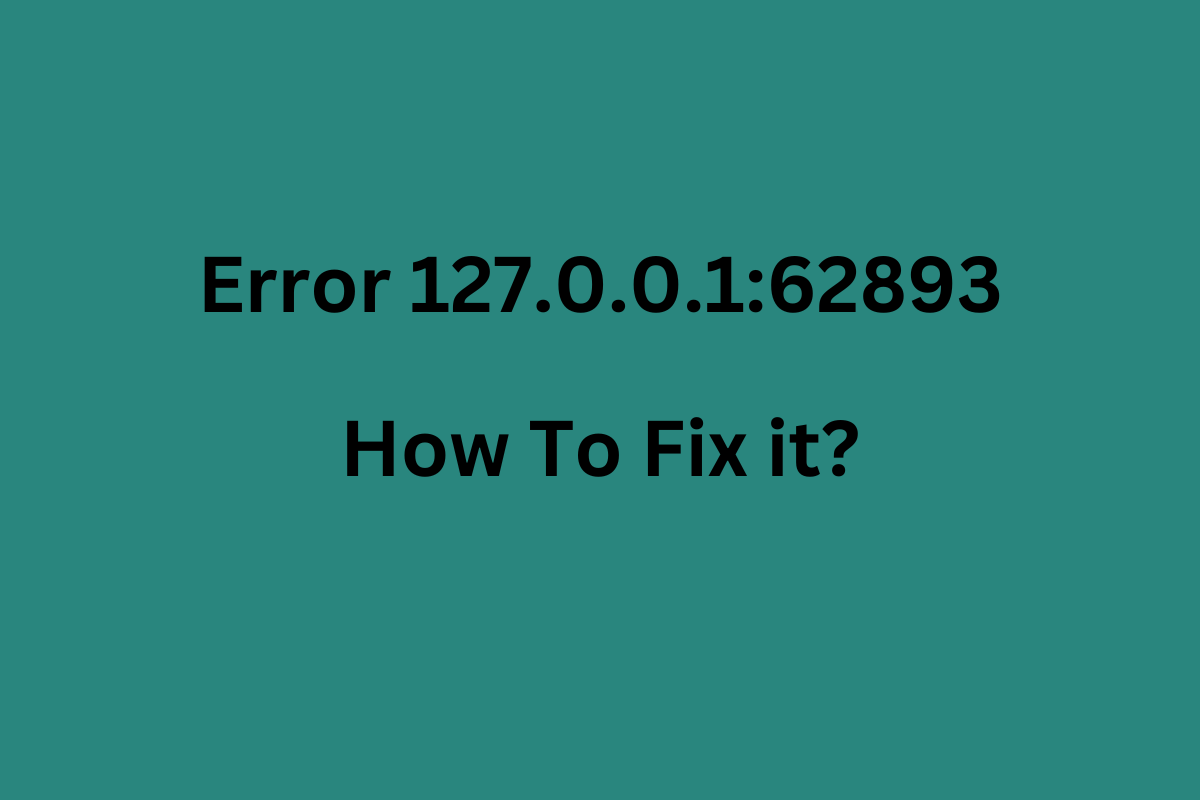In the world of networking and computer systems, encountering issues with specific IP addresses and ports can be quite common. One such scenario involves the address 127.0.0.1:62893. If you’re scratching your head wondering what this means or how to fix issues related to it, you’re in the right place. This guide aims to break down the essentials, offer practical troubleshooting steps, and help you get back on track.
Understanding 127.0.0.1:62893
Definition of 127.0.0.1
127.0.0.1 is often referred to as the loopback address or localhost. It’s a special IP address used by a computer to refer to itself. Think of it as your computer’s way of talking to itself. When you ping 127.0.0.1, you’re essentially asking your machine to send a message to itself to ensure the networking components are functioning correctly.
Role of Port 62893
Ports are numerical identifiers in networking used to distinguish different types of network traffic. Port 62893, in this case, is a specific port number that an application or service might use for communication. The combination of 127.0.0.1 and port 62893 directs traffic to a particular service running on your local machine.
Common Scenarios Involving 127.0.0.1:62893
You might encounter 127.0.0.1:62893 in various situations, such as during software development while running local servers, or when configuring certain networked applications. Issues can arise if the service expected to be running on this port isn’t available, if there’s a misconfiguration, or if other network problems are at play.
Common Issues Related to 127.0.0.1:62893
Connection Refused Errors
One of the most frequent issues is a “connection refused” error. This typically means that there’s no service listening on the specified port or that a firewall is blocking the connection.
Network Configuration Problems
Network settings can often be the culprit. Incorrect IP settings, subnet configurations, or DNS issues can prevent proper communication.
Software Conflicts
Sometimes, different software programs might clash, especially if multiple applications attempt to use the same port, leading to conflicts and connectivity issues.
Diagnosing the Problem
Initial Checks
Start by ensuring that the service you’re trying to connect to is indeed running. Verify that there are no obvious issues, like a misconfigured firewall or an application crash.
Using Command Line Tools
Command line tools like ping, netstat, and telnet can be invaluable for diagnosing network problems. These tools help check connectivity, list active ports, and test open ports, respectively.
Analyzing Logs
Logs are your best friend when troubleshooting. Check application and system logs for any error messages or warnings that might give you a clue about what’s wrong.
Fixing Connection Refused Errors
Ensuring Services Are Running
Verify that the necessary service is running on your machine. This could involve restarting a web server, database service, or any other application.
Checking Firewall Settings
Firewalls are designed to block unwanted traffic, but sometimes they block legitimate traffic too. Ensure that your firewall isn’t preventing the connection to port 62893.
Verifying Application Configurations
Double-check the configuration files of your applications to ensure that they are set to use the correct IP address and port.
Resolving Network Configuration Issues
IP Address Conflicts
IP conflicts occur when two devices on the same network are assigned the same IP address. Ensure that each device has a unique IP.
Subnet and Gateway Issues
Make sure your subnet and gateway configurations are correct. Incorrect settings here can prevent devices from communicating properly.
DNS Configuration
DNS issues can prevent your computer from resolving domain names correctly. Ensure your DNS settings are correct and that your DNS server is functioning properly.
Addressing Software Conflicts
Identifying Conflicting Programs
Determine if there are any programs trying to use the same port. Tools like netstat can help you see which ports are in use and by which applications.
Updating Software
Keeping your software up to date can resolve bugs and compatibility issues. Check for updates regularly.
Reinstalling Applications
If an application is causing persistent issues, try uninstalling and then reinstalling it. This can sometimes resolve configuration or corruption problems.
Advanced Troubleshooting
Using Network Monitoring Tools
Network monitoring tools like Wireshark can give you a deeper insight into what’s happening on your network. These tools capture and analyze packets of data traveling across your network.
Debugging with Telnet and Netstat
Using telnet to connect to a specific port can help you determine if that port is open and listening. Netstat provides a list of all open ports and active connections.
Packet Sniffing for Deep Analysis
Packet sniffers like Wireshark can capture detailed data about the packets being sent and received on your network, helping you identify issues at a granular level.
Preventative Measures
Regular System Updates
Keep your operating system and applications updated to avoid known bugs and vulnerabilities.
Implementing Network Security Practices
Good security practices include configuring firewalls correctly, using strong passwords, and regularly scanning for malware.
Regular Monitoring and Maintenance
Set up regular monitoring to catch issues early. Tools like Nagios can alert you to problems before they become critical.
Case Studies
Real-world examples can provide valuable insights. Consider studying cases where others have encountered and resolved issues with 127.0.0.1:62893 to learn from their experiences.
Tools and Resources
Recommended Software and Tools
- Wireshark: For packet sniffing
- Nagios: For monitoring
- Netstat: For viewing network connections
- Telnet: For testing open ports
Useful Websites and Forums
- Stack Overflow: For community support and troubleshooting
- GitHub: For software updates and issues
- Networking forums: For advice and best practices
Common Mistakes to Avoid
Ignoring Error Messages
Error messages are there for a reason. Pay attention to them as they often contain clues to the problem.
Misconfiguring Network Settings
Always double-check your network settings. A small mistake can cause big problems.
Overlooking Software Updates
Regular updates are crucial for security and functionality. Don’t skip them.
Frequently Asked Questions (FAQs)
What does 127.0.0.1 mean?
127.0.0.1 is the loopback address, commonly known as localhost. It’s used by a computer to refer to itself.
Why is port 62893 used?
Port 62893 could be used by a specific application for communication. The choice of port depends on the application’s configuration.
How do I check if port 62893 is open?
You can use tools like netstat or telnet to check if port 62893 is open and listening for connections.
What is the difference between 127.0.0.1 and localhost?
There is no difference; 127.0.0.1 is the IP address for localhost. They are interchangeable terms.
How can I secure my local network connections?
Use strong passwords, enable firewalls, regularly update software, and monitor network activity to secure your local connections.
Conclusion
Understanding and fixing issues related to 127.0.0.1:62893 requires a methodical approach. By diagnosing the problem, applying the right fixes, and implementing preventative measures, you can ensure your system runs smoothly. Remember, staying proactive and informed is key to avoiding future issues.
Final Thoughts
Keep learning and stay prepared. Networking can be complex, but with the right knowledge and tools, you can tackle any issue that comes your way. If you need further assistance, don’t hesitate to seek help from online communities and forums.




